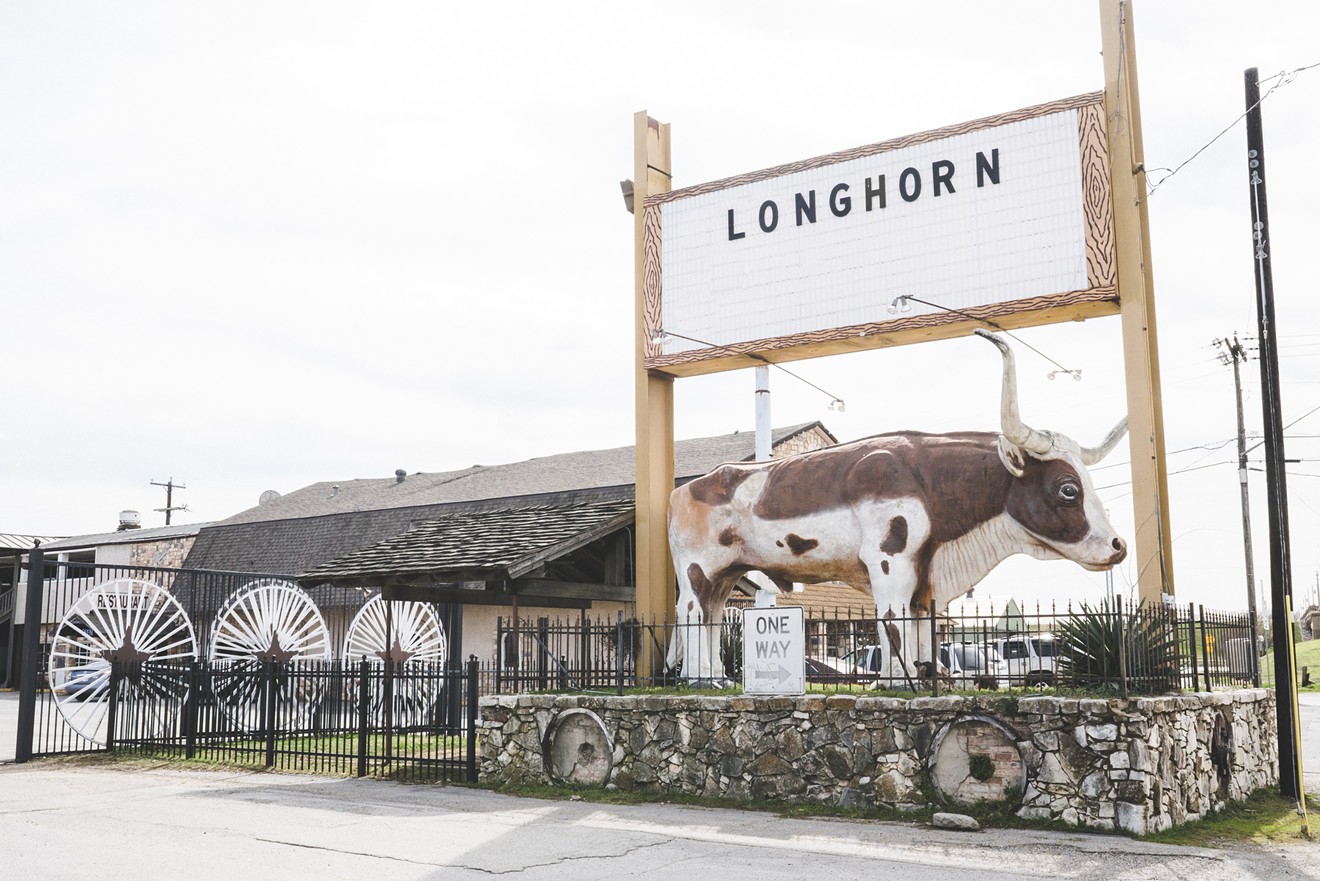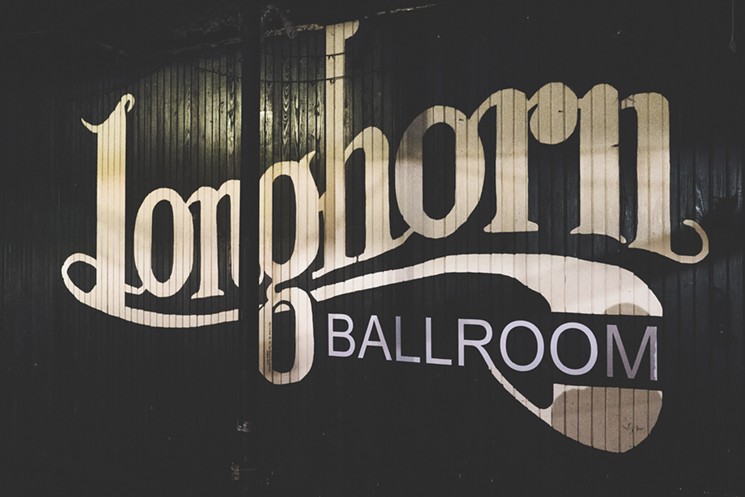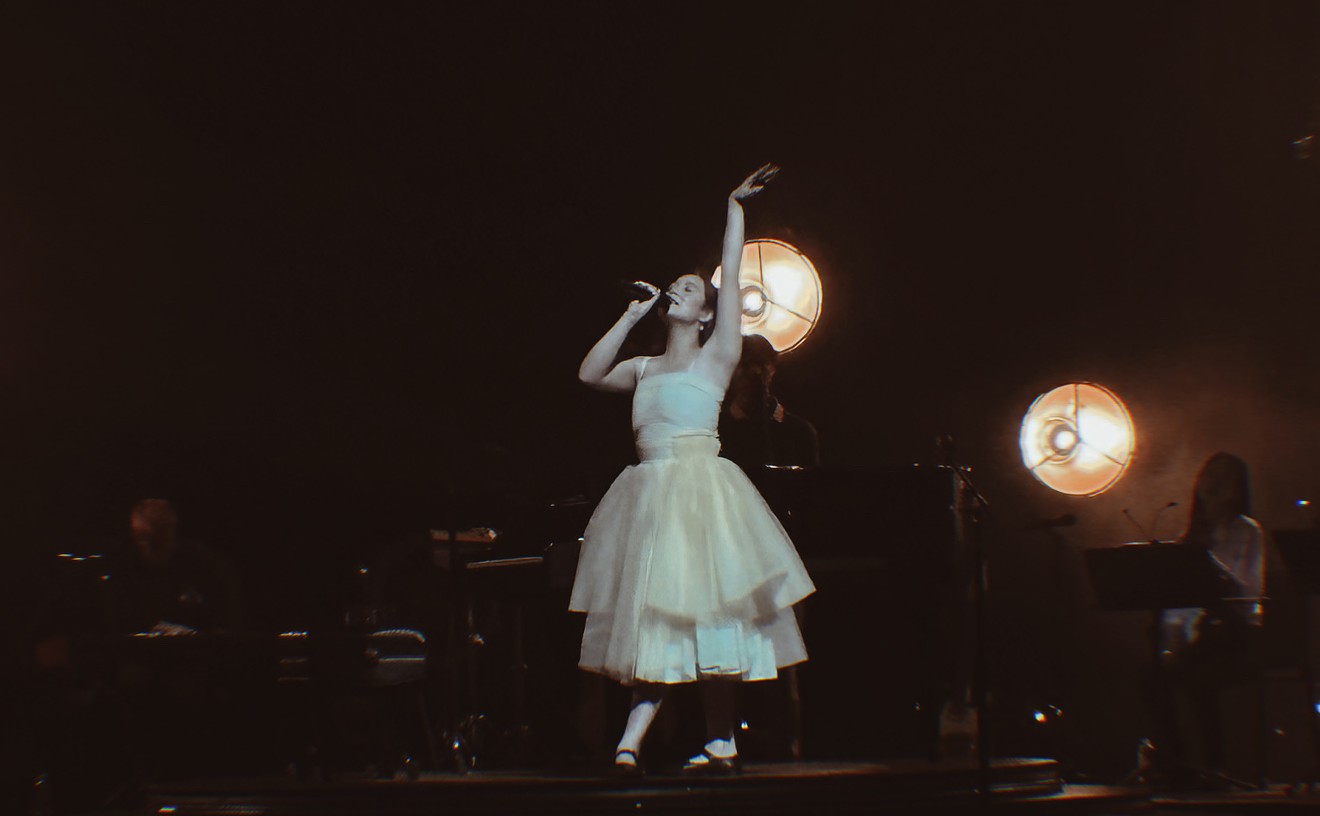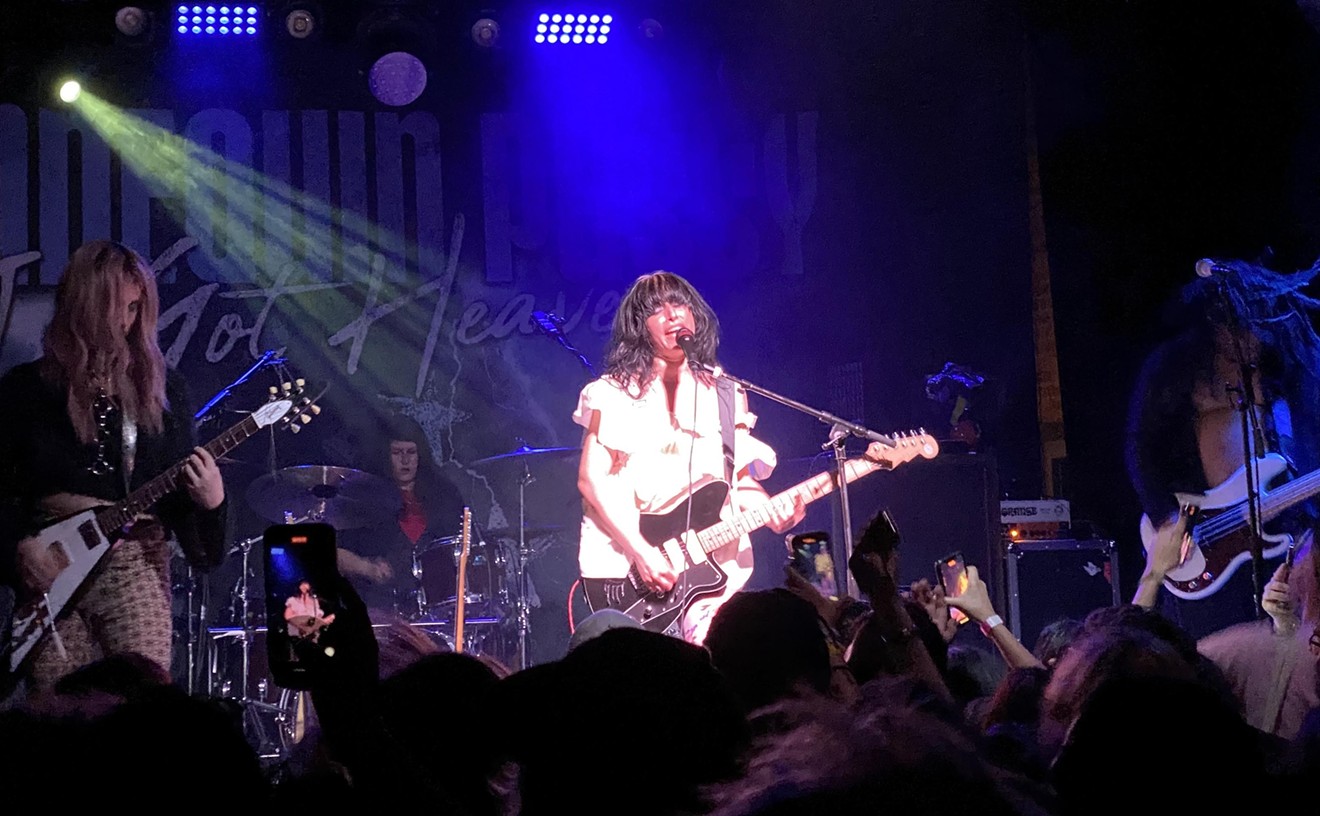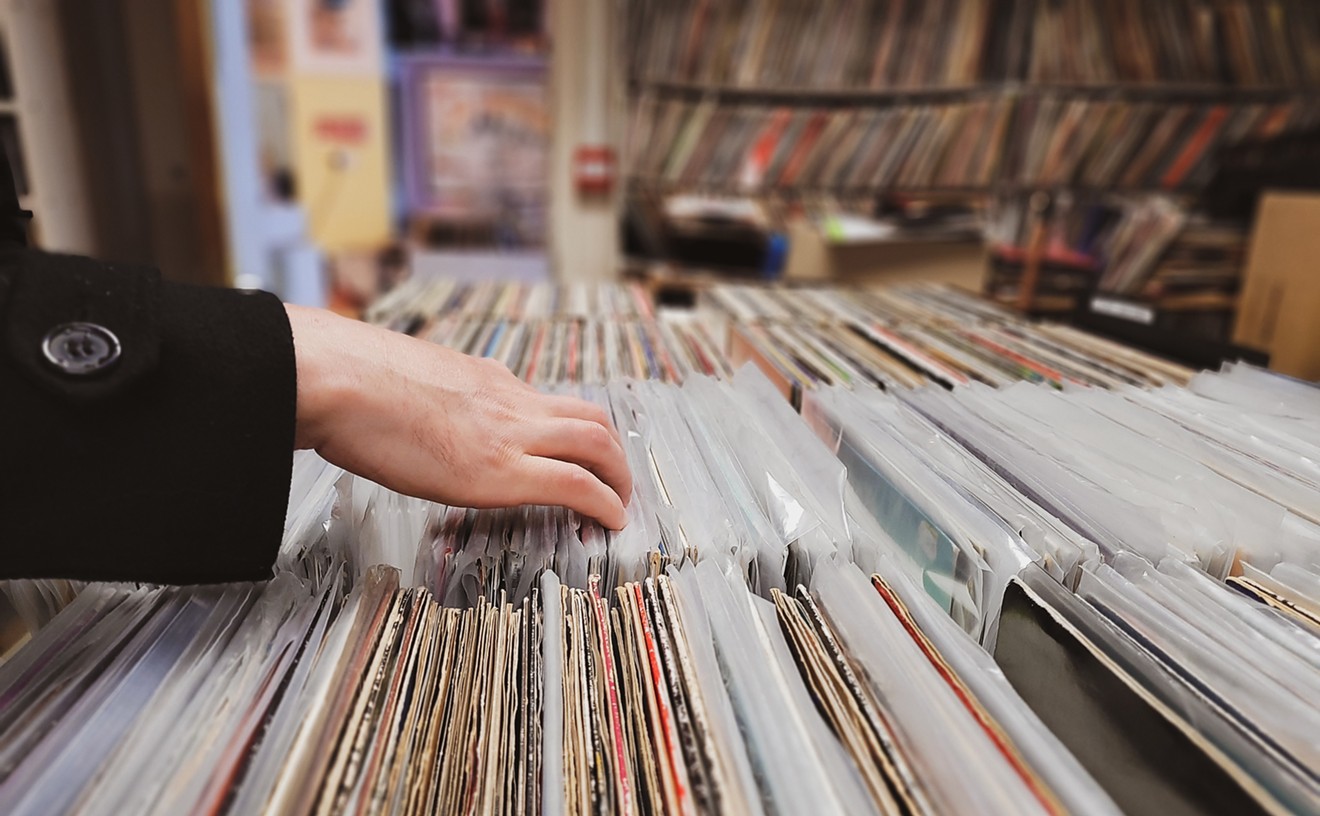A tip from an Uber driver about a property that was for sale along the Trinity River led Jay LaFrance to saving one of Dallas' most historic musical landmarks. Built in 1950, the Longhorn Ballroom was once the home of Bob Wills and run by Jack Ruby, but when it came up for sale last year it seemed poised to fall into the hands of developers, and LaFrance could have been one of them.
"When I first heard about it, I thought of it as a piece of land that I would bulldoze," says LaFrance, who admits that while he was familiar with the Longhorn beforehand he knew little of its history until he pursued the property. "But once I walked inside I said, 'Oh no, I got to save this place,'" he says.
LaFrance, who closed the deal on the four-and-a-half-acre property last weekend, says that at least one of the competing bidders was planning to tear down the 67-year-old country dance hall to make way for an apartment complex.
"I paid more for it than I wanted to but I did that because he was going to bulldoze it down, and it's a historic site," LaFrance says. That was enough to make the Longhorn's previous owner, Raul Ramirez, happy, as well. "He owned it 20 years and put on concerts here. He didn't want to see it bulldozed down. So yeah, that was my advantage; I was going to keep it and carry it on."
While not the oldest live music venue in Dallas, the Longhorn comes close, and its history is second to none: Built by millionaire O.L. Nelms to woo Bob Wills back from California (he used to ride his horse, Punkin, around the dance floor during shows), it hosted a who's-who of country musicians from the '50s through to the '80s. Under the ownership of Wills' friend Dewey Groom, who bought the club in 1958, the Longhorn also expanded to host R&B legends like Otis Redding, Al Green and Ray Charles, and even the infamous Sex Pistols concert in the winter of 1978.
At its height, the Longhorn was a cultural destination as well as a concert space: The Buddy Holly Story hosted its premiere there the same year as the Pistols show, and Dallas filmed several episodes inside of it in the '80s. Celebrities like Mick Jagger were as likely to be seen there as Willie Nelson, who performed there regularly. But the Longhorn has fallen into an increasing state of disrepair since Dewey sold it in 1986.
"I think Jay, of all the people who bought it over the years, is the only one who's intrigued me that might do something with it," says Groom's son Doug, who was there for the Longhorn's heyday. LaFrance has made a point of getting to know Groom and learning about its history. "Jay didn't have to go to this much trouble to learn the history of the club," Groom says. "He's wanting to know how we were successful, and that's the way he’ll be successful."
LaFrance's daughter Amber is involved in the music business as a publicist, but this is the first time he's gotten involved in the industry. "I've been an entrepreneur of everything from automative aftermarket to technology startups to senior living homes. This is just another business," he says. But it's a business that he's bullish about being able to grow: Located at the intersection of Riverfront and Corinth, LaFrance points out that it's only a half mile away from where a proposed high-speed rail line will stop and, if the plans ever materialize, also near an exit of the proposed Trinity toll road.
While concerts haven't been booked there in a decade, Ramirez kept the ballroom active with regular quinceañeras. "That means the place is up to code. It's got health code, it's got building occupancy and it's functioning. If it had been sitting closed for 10 years, it would be a disaster," LaFrance says. The neighborhood is also zoned for entertainment, meaning it'll have fewer restrictions on operating hours and noise ordinances. "We don't have to do much. Upgrade the facade, put the sign up, redo the parking lot, and then replace the bathrooms — and that's basically it," he says.
The famous lighted sign, which once stood out front above the giant cow statue, has been sitting in storage but is fully operational and ready to be put back in place. LaFrance already has Stylle Read, the artist known for his murals in Fort Worth's Stockyards, at work restoring the club's many western-themed murals. He also wants to restore the "Texas Walk of Fame," which includes hand and footprints (or, more specifically, boot prints) from famous Texans who played there over the years.
But Groom believes restoring the Longhorn's look to its past glory won't be so easy. "[The past owners] have actually screwed it up. All the murals have been painted over, they've rearranged. It's not even the same club as it was. The interior is just entirely different," he says. "If they hadn't screwed it up, it would be a gold mine right now."
LaFrance admits that his plans to host the Longhorn's first concert at the beginning of May are "aggressive." But that would only be the first part of a much bigger renovation: Beyond the ballroom, which can accommodate 2,500 people, the Longhorn complex has space for retail, a restaurant (currently called Raul's, after Ramirez), and lawn space in the back that abuts the river. LaFrance says he'd like to open up the retail space to artists and turn the lawn space into an outdoor venue, complete with picnic tables, food trucks and storage containers.
But LaFrance says that while he wants to combine "the old and the new," including showcasing some of its history in other genres, his priority is to restore the Longhorn's country music legacy. It is, after all, the oldest dance hall in North Texas. "Fort Worth gets all the credit for being the Western deal with 35 years of Billy Bob's. But you guys have got this right here, and it's 66 years," LaFrance says. "Don't let Fort Worth have the bragging rights."
He'll have an ally in Groom, who's happy to see his family's old business saved. "They got somebody who gives a damn. He wants to make a success of it. I'll go out of my way to help him. The rest of them sons of bitches, I wouldn't give them 10 cents," Groom says. "I think Jay will put it back as best as he can."
[
{
"name": "Air - MediumRectangle - Inline Content - Mobile Display Size",
"component": "18855504",
"insertPoint": "2",
"requiredCountToDisplay": "2"
},{
"name": "Editor Picks",
"component": "17105533",
"insertPoint": "4",
"requiredCountToDisplay": "1"
},{
"name": "Inline Links",
"component": "18349797",
"insertPoint": "8th",
"startingPoint": 8,
"requiredCountToDisplay": "7",
"maxInsertions": 25
},{
"name": "Air - MediumRectangle - Combo - Inline Content",
"component": "17105532",
"insertPoint": "8th",
"startingPoint": 8,
"requiredCountToDisplay": "7",
"maxInsertions": 25
},{
"name": "Inline Links",
"component": "18349797",
"insertPoint": "8th",
"startingPoint": 12,
"requiredCountToDisplay": "11",
"maxInsertions": 25
},{
"name": "Air - Leaderboard Tower - Combo - Inline Content",
"component": "17105535",
"insertPoint": "8th",
"startingPoint": 12,
"requiredCountToDisplay": "11",
"maxInsertions": 25
}
]

